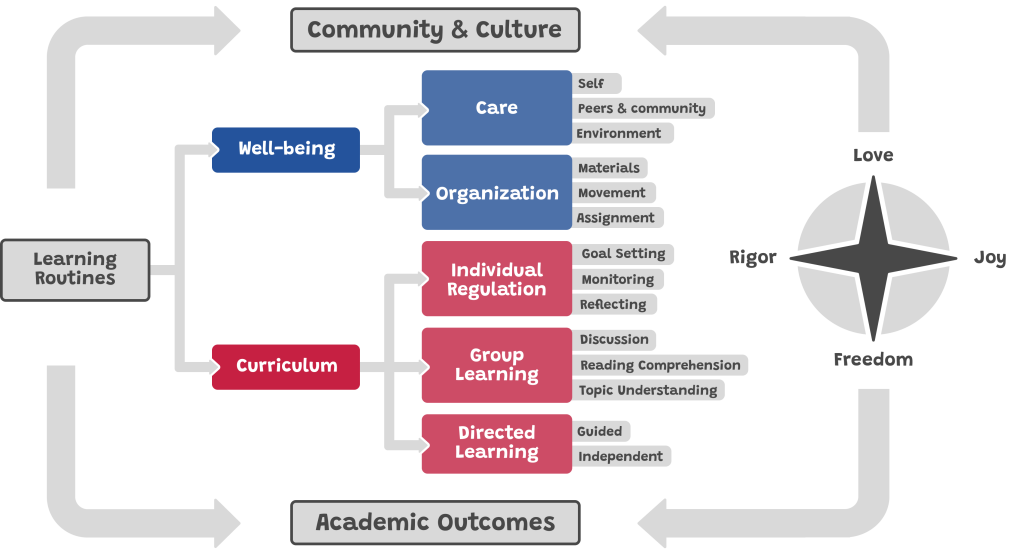Learning routines are essential for inclusive classrooms because learning routines are designed to promote student autonomy and community. Most importantly, learning routines provide teachers with time to listen to students and think about how to adjust teaching to nurture meaningful learning. Routines can be broken down into a series of several learning elements (task structures, help, and the option continuum). Teachers use essential skills to implement learning routines and dynamically adjust learning routines in response to specific student learning needs during lessons.
Routines in Our Tools
Agility is a game that challenges players to address common classroom problems by using combinations of routines, help resources, and choice. The game uses a majority of the learning routines, help resources, and choice elements on our website.
Teaching with Grace is a simulation designed to let educators practice providing feedback. Each of the scenarios in the Teaching with Grace Library demonstrates a different learning routine.
Different Types of Routines
Expert teachers identify and build routines. Ron Ritchhart (2002) studied classroom routines and organized his observations into two broad categories, mechanics (i.e. management, housekeeping) and learning (i.e. discourse, and thinking). In 2024, how we think about teaching and learning has changed. Learning routines can be organized in terms of two large goals Wellbeing (i.e. care, organization) and Curriculum (i.e. thinking and discussion). Curriculum routines are designed to support and building thinking individually and collaboratively that results in learning. Curriculum routines promote individual learning, going solo- when students are learning through their own thinking or learning through collaboration – where students share and build on each other’s thinking. Generally, individual learning routines are individual or teacher directed and collaboration routines are group learning or free discussion.

Elements of Learning Routines
Learning routines are used within the curriculum. All routines are made up of some combination of 3 different elements: structure, choice, and help resources. Familiarity with the elements at your disposal and mastery of the 8 essential skills will set you up to juggle instructional challenges with agility and grace.
References
Richhart, R. (2002). Intellectual character: What it is, why it matters, and how to get it. San Francisco, CA: Jossey-Bass

